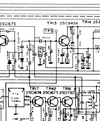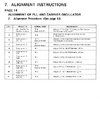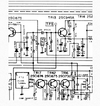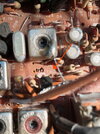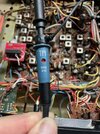So I decided to align a trc490 ssb radio same as a washington with 8719/8734.
PC 385 board
radio came with a mb8734 and was changed to a mb8719 with the 11.3258 xtal.
In the service manual says the following at TP1 lead of r157.
So I clipped onto r157 and
tp1 adjust L20 for 34.92500 and I read 35.1249 for am
tp1 adjust L19 for 34.9225 and I read 35.1221 for lsb
tp1 adjustct3 for34.927500 and I get 35.1269 for usb
then for the tp3 r101/tr113
lsb adjust ct2 for 7.7975 and i get 34.7621
usb adjust ct1 for 7.802500 and iget34.7669
am adjust L17 for 7.800 and i get 34.7469
What am I doing wrong to get these readings never had this happen.
Would changing the pll to the mb8719 and the xtal to the 11.1125 change these readings??
An external freq counter shows all is good but with the in circuit I just cant get any correct readings.
thanks for any help
PC 385 board
radio came with a mb8734 and was changed to a mb8719 with the 11.3258 xtal.
In the service manual says the following at TP1 lead of r157.
So I clipped onto r157 and
tp1 adjust L20 for 34.92500 and I read 35.1249 for am
tp1 adjust L19 for 34.9225 and I read 35.1221 for lsb
tp1 adjustct3 for34.927500 and I get 35.1269 for usb
then for the tp3 r101/tr113
lsb adjust ct2 for 7.7975 and i get 34.7621
usb adjust ct1 for 7.802500 and iget34.7669
am adjust L17 for 7.800 and i get 34.7469
What am I doing wrong to get these readings never had this happen.
Would changing the pll to the mb8719 and the xtal to the 11.1125 change these readings??
An external freq counter shows all is good but with the in circuit I just cant get any correct readings.
thanks for any help
Last edited:

